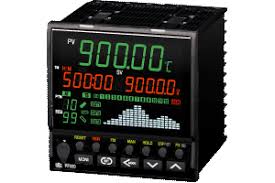1300 737 976
Call us
Live Chat
Call us
What’s new in RKC Instrument Controllers..

What is a Ramp Soak Controller
Ramp Soak Controllers are subset of Profile Controllers. These are mainly used for controlling temperature or any other process parameter against time. Ramp soak controllers control the rate of rise (ramp) of temperature / controlled parameter and then maintain it to the programmed value for programmed time.

In the soak segment of the profile, the solder paste approaches a phase change. The amount of energy introduced to both the component and the PCB approaches equilibrium. In this stage, most of the flux evaporates out of the solder paste. The duration of the soak varies for different pastes. The mass of the PCB is another factor that must be considered for the soak duration. An over-rapid heat transfer can cause solder splattering and the production of solder balls, bridging and other defects. If the heat transfer is too slow, the flux concentration may remain high and result in cold solder joints, voids and incomplete reflow. After the soak segment, the profile enters the ramp-to-peak segment of the profile, which is a given temperature range and time exceeding the melting temperature of the alloy. Successful profiles range in temperature up to 30 °C higher than liquidus which is approximately 183 °C for eutectic and approximately 217 °C for lead-free.
The final area of this profile is the cooling section. A typical specification for the cool down is usually less than −6 °C/s (falling slope).

When the PCB enters the cooling segment, the negative slope generally is steeper than the rising slope.

Features: The program controllers has the following features: Selectable LCD color Dominant color (s) of LCD is selectable when ordering. • PF900: Green and Orange• PF901: White Easy-to-read display. Easily check the operation state in progress by the simultaneous display of segment level and segment time, the operation lamps, and the program pattern indicated with the bar graph of dots. Large-capacity program setting Up to 99 program patterns may be set. Each program pattern offers up to 99 segments. 1024 segments maximum: number of Pattern × number of segment Auto tuning (AT) with learning function Search soak areas to conduct Auto tuning (AT) to the segments in turn in the Reset mode (RESET). Display Function Selectable Sampling cycle It is possible to switch Sampling cycle between 50 ms, 100 ms and 250 ms. Program pattern copy function Easily create new program pattern by copying patterns or segments being programmed. Set values management Setting the Memory group of each segment where set values such as PID values and Event are stored may allow specific control for each segment.Parameter setting groups• PID memory group: 8 groups • Event memory group: 8 groups • Wait memory group: 8 groups • Time signal memory group: 16 groups • Output program memory group: 1 to (128/Maximum segment number) Selectable PID zones Level PID and Segment PID may be changed. Ramp/Soak stabilizer function Suppress overshoot when the program shifts from ramp to soak.
In Summary
The RKC PF900 / PF901 are high performance ramp/soak controller have High intensity display. New control algorithm RSS (Ramp Soak Stabilizer). Maximum of 3 point program pattern outputs.Up to 1024 segments. Two types signal mode (Time signal output, Segment signal output). Satisfies versatile applications.Memory group. Collaborative program operation (Inter-controller communication). Front loader interface + Programming tool.
Copyright © 2022 Created by Pepper Digital
Disclaimer – Images for illustrative purposes only and may not be representative of the actual resolution of the camera shown.